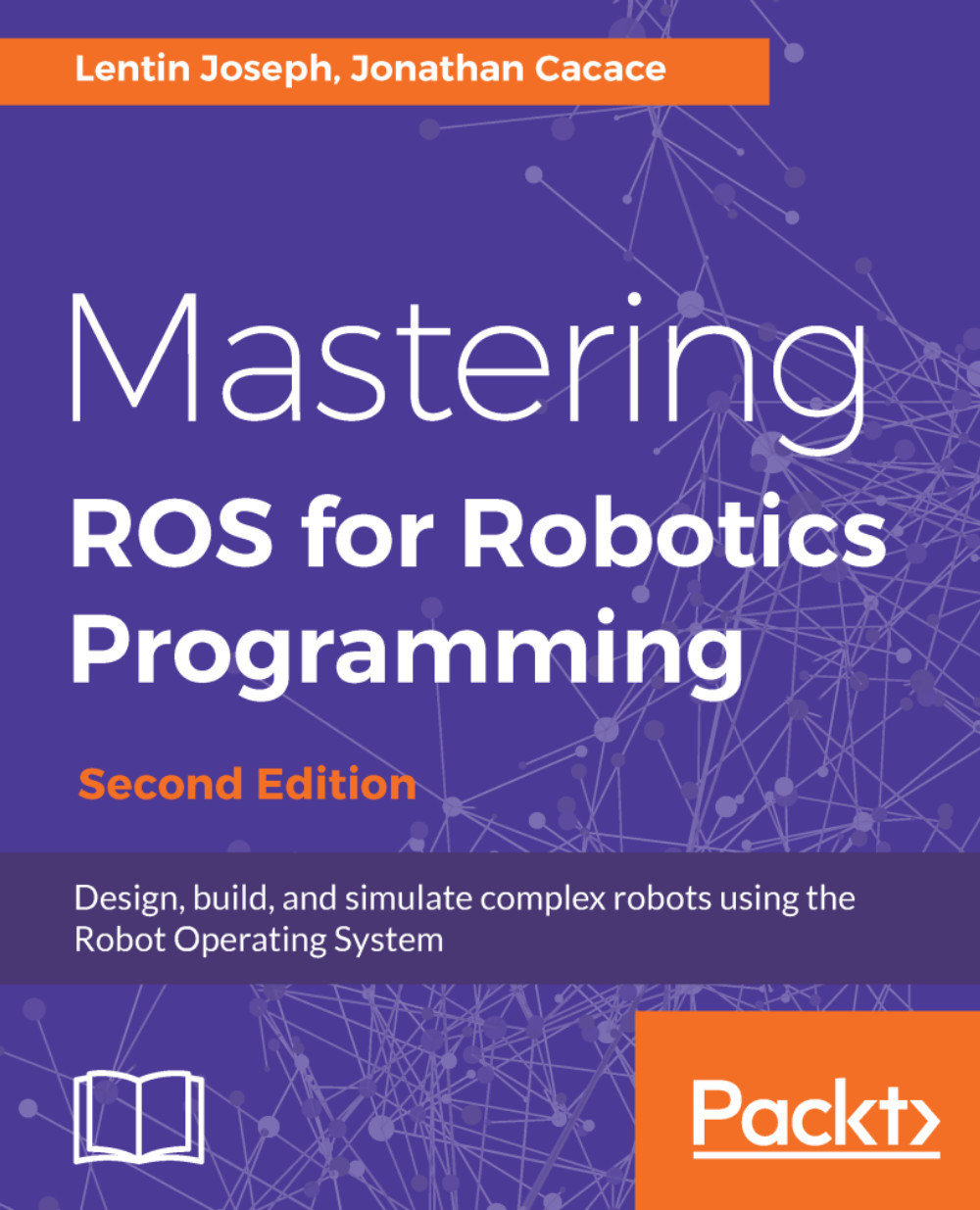In order to run the examples in this book, you need a standard PC running Linux OS. Ubuntu 16.04 is the suggested Linux distribution, but Debian 8 is supported as well. The suggested PC configuration requires at least 4 GB of RAM and a modern processor (Intel i-family) to execute Gazebo simulations and image processing algorithms.
Readers can even work in a virtual environment setup installing Linux OS on a virtual machine, using Virtual box or VMware software hosted on a Windows system. The disadvantage of this choice is that more computational power is needed to work with the examples and the reader could face issues when interfacing ROS with real hardware.
The software needed to follow the book is ROS and Kinetic Kame. Additional software required is V-REP simulator, Git, Matlab, and Simulink.
Finally, some chapters help readers to interface ROS with commercial hardware such as I/O boards (Arduino, Odroid, and Raspberry Pi computers), vison sensors (Kinect/Asus Xition Pro), and actuators. These are special hardware components that must be bought to run some examples of the book but are not strictly required to learn ROS.
































































